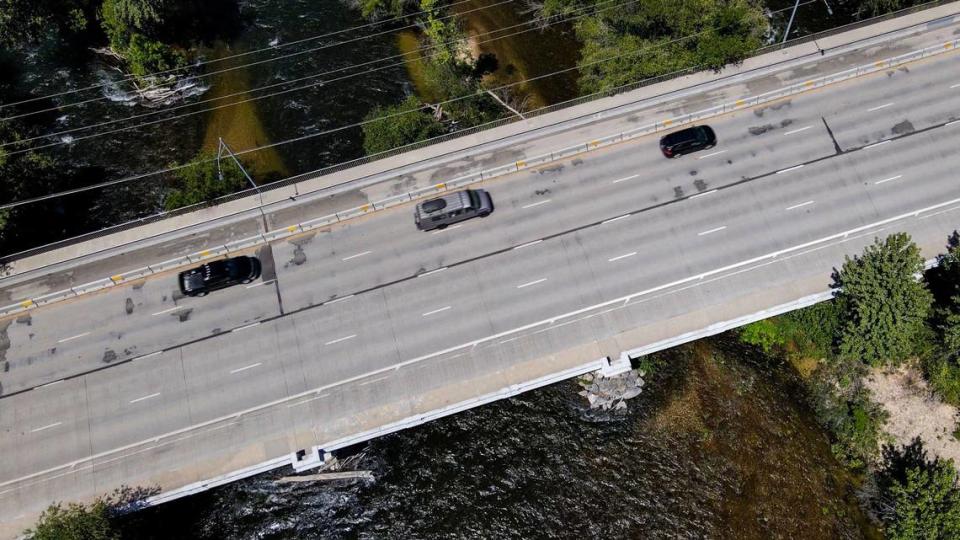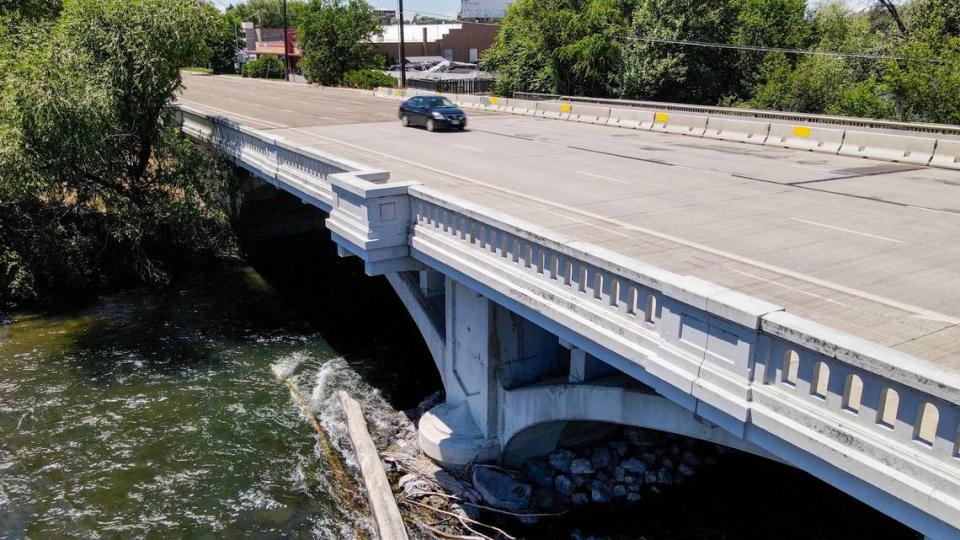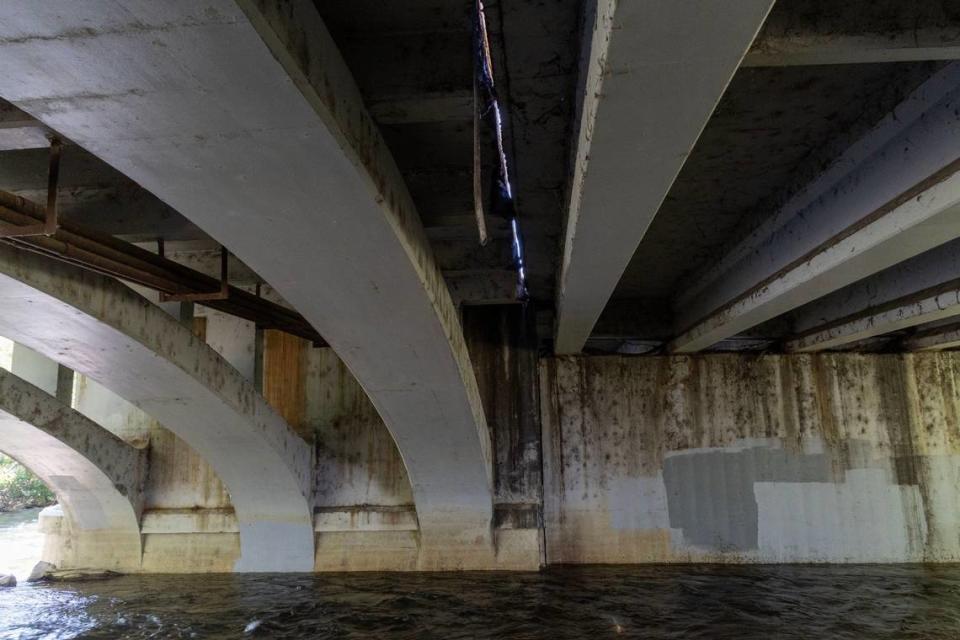Half of this Boise Art Deco bridge is 92 years old. It might be gone in a few years
The Ada County Highway District plans to replace a 92-year-old Art Deco bridge over the Boise River that carries thousands of motorists each day.
The bridge carries four lanes of eastbound Fairview Avenue traffic headed toward downtown, especially during the morning commute. It’s actually two bridges: an historic two-lane bridge built in 1932, and a utilitarian two-lane one added alongside the first in 1976.
The high floods of 2017 highlighted some scouring problems and required riprap to be placed at the bottom. Brooke Green, senior transportation planner at ACHD, said that raised some concerns and a reason to start evaluating the bridge’s structural integrity and capacity for future use.

ACHD is starting to figure out what the new bridge should look like and the traffic volumes it should accommodate. In May, it carried 12,832 vehicles per day on average, according to the Idaho Transportation Department.
Green said the agency does not know what the design of the bridge will look like, or how many travel lanes it will have, but she said that it will remain one way. Main Street carries westbound traffic across another bridge just to the north.
‘‘It’s too premature to release whether or not we’re going to have a reduction of lanes or we’re going to add lanes,’’ Green said.

Staying within the bridge’s existing footprint is a priority, Green said. ACHD wants to minimize any environmental impacts and will continue to ‘‘examine and explore options for pedestrian and bike facility access to the Greenbelt,’’ Green told the Idaho Statesman.
The bridge was documented and evaluated for listing in the National Register of Historic Places, according to Ashley Molloy of the Idaho State Historic Preservation Office. But it was deemed ineligible because it has been altered and therefore lost its historic integrity.
Art Deco emerged in the 1920s in Paris in arts, crafts and architecture and gained popularity in the 1930s, the Statesman previously reported. The Chrysler Building and Rockefeller Center in New York were built in Art Deco style.
Visual Arts Cork, an Irish online arts encyclopedia, says: “The art deco style, which above all reflected modern technology, was characterized by smooth lines, geometric shapes, streamlined forms and bright, sometimes garish colours. Initially a luxury style (a reaction against the austerity imposed by World War I) employing costly materials like silver, crystal, ivory, jade and lacquer, after the Depression it also used cheaper and mass-produced materials like chrome, plastics, and other industrial items catering to the growing middle class taste for a design style that was elegant, glamorous and functional.”
Only one side of the bridge has Art Deco features today. That side has arches with Art Deco pediments, while the more recent side has a simple railing.
‘‘Historically, the bridge would have had both of those Art Deco features and at some point they widened that bridge and got rid of the other half of the bridge,’’ Molloy said.

Green told the Idaho Statesman that the replacement will cost ‘‘several million dollars,’’ but they won’t know how much until they have a concept.
What comes next
ACHD’s staff sought authorization on May 15 from the agency’s elected commissioners to begin pursuing federal funding for the replacement. This was just the beginning of a series of phases that ACHD will follow.
The concept phase is expected to take one to two years, according to Green. That will be followed by the design, right-of-way and construction phases.
ACHD will also need to take into account environmental factors and National Environmental Policy Act requirements, which could take several years, Green said in a phone interview.
If everything goes as planned and pending federal funding, the new bridge would be constructed between 2028 and 2029, Green said.
The apartments planned at the old Sears at Boise Towne Square still aren’t built. Now this
Heading out of town on Idaho 55? Transportation officials warn of construction delays
Harris Ranch has been under construction for nearly two decades. What’s happening next?
Boise takes over repairs of historic downtown building, citing ‘inaction’ by the owner


